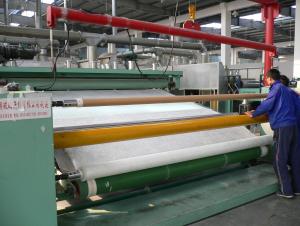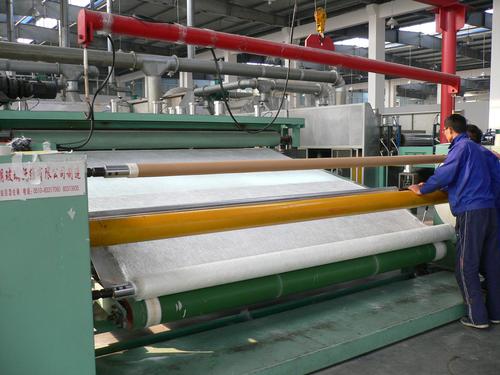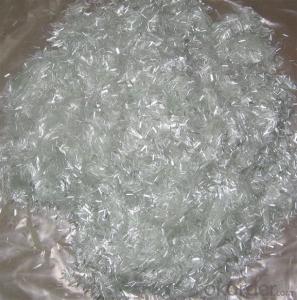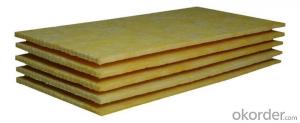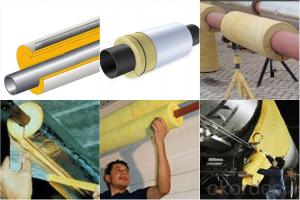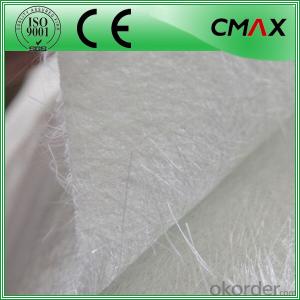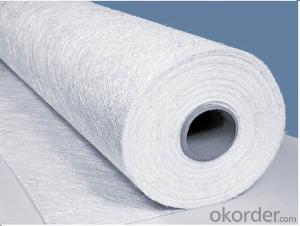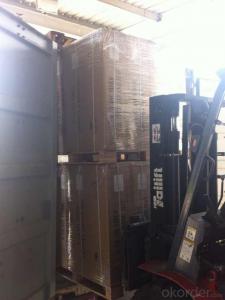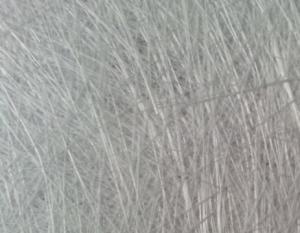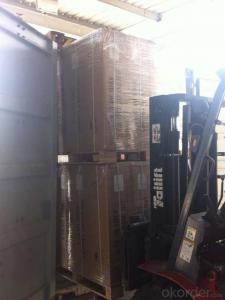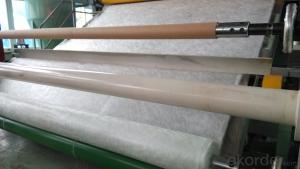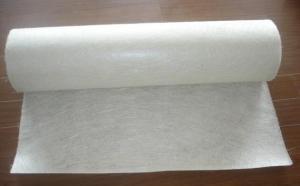Fiberglass Mat Tissue - E-Glass Chopped Strand Mat Emulsion Bonded-1040/1250/1270/1860/3200mm
- Loading Port:
- Shanghai
- Payment Terms:
- TT or LC
- Min Order Qty:
- -
- Supply Capability:
- 1500ton m²/month
OKorder Service Pledge
OKorder Financial Service
You Might Also Like
Specification of E-Glass Chopped Strand Mat
Property | Glass type | Weight(g/m2) | Width 200~3300 | Roll Weight | Moisture Content /% | Combustible Content /% | Breakage Strength /N |
Test Method | GB/T 1549 | ISO3374:2000 | ISO3374 | GB/T17470-1998 | ISO3344:1997 | ISO1887:1995 | ISO3342 |
EMC 80 | E-GLASS | 80±16 | ±5 | 6~50 | <0.2 | 13.6±0.35 | ≥200 |
EMC 100 | E-GLASS | 100±10 | ±5 | 6~65 | <0.2 | 9.5±0.35 | ≥170 |
EMC 150 | E-GLASS | 150±15 | ±5 | 6~97 | <0.2 | 8.0±0.35 | ≥40 |
EMC 225 | E-GLASS | 225±22 | ±5 | 6~150 | <0.2 | 5.0±0.6 | ≥60 |
EMC 300 | E-GLASS | 300±30 | ±5 | 6~180 | <0.2 | 4.0±0.6 | ≥90 |
EMC 450 | E-GLASS | 450±45 | ±5 | 6~180 | <0.2 | 3.8±0.6 | ≥120 |
EMC 600 | E-GLASS | 600±60 | ±5 | 6~240 | <0.2 | 3.6±0.6 | ≥150 |
EMC 900 | E-GLASS | 900±90 | ±5 | 6~190 | <0.2 | 3.4±0.6 | ≥180 |
Characteristics of Chopped strand mat
1.Uniform density ensures consisttent fiberglass content and mechanical properties of the composites products;
2.Uniform powder distribution ensures good mat integrity, little loose fibers and small roll diameter;
3.Excellent flexibility ensures good moldability with no spring back at sharp angles;
4.Fast and consistent wet-out speed in resins and rapid air lease reduce resin consumption and production cost, and enhances productivity and mechanical properties of the end products.
5, The composite products have high dry and wet tensile strength and good transparency.
6, Optional for high strength with stiff mat for panel laminating and midle strength with soft mat for hand layup.
Product description of Fiber Glass Powder Binder Chopped Strand Mat
Glass Fiber Emulsion Binder Chopped Strand Mat is an unwoven fabrics consisting of randomly distributed chopped strands held together with Emulsion Binder.
Emulsion Binder Chopped Strand Mats are compatible with unsaturated polyester, vinyl ester, phenol and epoxy resins.
The products are widely used in hand lay-up process and can also be used in compression molding and continuous laminating process and hand layup process. The typical end-use applications include various panels, boats, bathroom accessories, automotive parts and cooling towers.
FAQ:
1. Why Choose us?
CNBM is a stated own company, provide the guarantee for the best quality, best service and safety business.
2. How will we guarantee the quality?
a, ISO 9001-2008 quality control system;
b, Strict and regular quality control in production;
c, Inspeciation when loading into container before shippment;
d, Sample stock for one year for quality tracing and record.
3. What is your MOQ?
Our MOQ is one pallet.
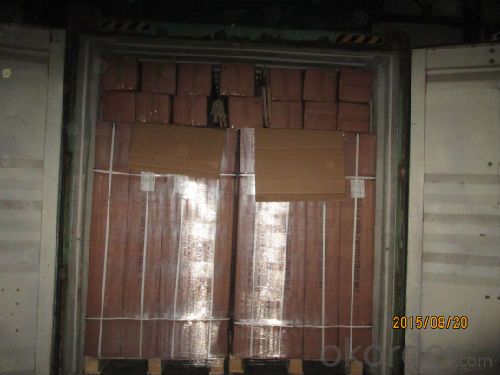
Package:
1, the Mat roll will be wrapped in PVC/PE film, then packed with carton boxes;
2, Vertically placed on bottom pallets by:
4 rolls*4 rolls or 4 rolls* 5rolls
Horizontally placed on upper pallets by:
3 rolls*4 rolls
3, the whole pallet will be fasten by PVC strips;
4, the whole pallets will be wrapped by strentchable PE film.
- Q: Can fiberglass mat tissue be used for repairing fiberglass structures?
- Yes, fiberglass mat tissue can be used for repairing fiberglass structures. It is commonly used in the construction and repair of fiberglass boats, car bodies, and other fiberglass structures. The mat tissue provides added strength and reinforcement to the damaged area, making it an effective solution for repairing fiberglass structures.
- Q: Can fiberglass mat tissue be used for electrical transformers?
- Fiberglass mat tissue can be used for electrical transformers. It is commonly used as insulation material in transformer manufacturing due to its excellent electrical insulation properties. Fiberglass mat tissue is made of fine glass fibers bonded together with a resin, creating a strong and durable material. It is able to withstand high temperatures and has a high dielectric strength, making it suitable for use in electrical transformers. Additionally, fiberglass mat tissue is lightweight and flexible, allowing for easy handling and installation in transformer components. It is also resistant to moisture, chemicals, and fire, further enhancing its suitability for transformer applications. Overall, fiberglass mat tissue is a reliable and efficient choice for insulation in electrical transformers.
- Q: Can fiberglass mat tissue be used for pipe insulation?
- No, fiberglass mat tissue is not typically used for pipe insulation. Fiberglass mat tissue is a thin material that is commonly used for reinforcing purposes in various industries. It is not designed to provide thermal insulation or to prevent heat loss in pipes. For pipe insulation, materials such as foam, mineral wool, or fiberglass pipe insulation are more commonly used. These materials are specifically designed to provide thermal insulation and protect pipes from heat loss, condensation, and freezing.
- Q: Is fiberglass mat tissue suitable for architectural applications?
- Yes, fiberglass mat tissue is suitable for architectural applications. It is commonly used as a reinforcing material for various architectural elements such as building facades, roofs, walls, and insulation. It provides strength, durability, and thermal insulation, making it an ideal choice for architectural projects.
- Q: What are the factors that affect the diameter of electrospun nanofibers?
- Application of drug controlled release, tissue engineering, the application of biomimetic materials and artificial organs, sensor film principle: electrospinning is a polymer solution (or melt) forming process of fiber in high voltage field, its core is to take charge of the polymer solution or melt flow and deformation in electrostatic field, and then by solvent evaporation or melt cooling and solid...
- Q: How is fiberglass mat tissue made?
- The production of fiberglass mat tissue involves a wet-laid process, which encompasses several sequential steps. Initially, glass fibers are generated by melting and extruding glass through tiny apertures, resulting in continuous filaments. These filaments are subsequently coated with a sizing agent, enhancing their manipulability and fortifying the end product. Subsequently, the glass fibers are fragmented into shorter lengths to create a fiber mat. This operation is typically accomplished using either a knife or a rotary chopper. The fragmented fibers are then amassed and fashioned into a thin layer on a moving conveyor belt. Concurrently, a binder solution is formulated by blending a synthetic resin with water. This solution is then sprayed onto the fiber mat, ensuring the fibers become saturated and bonded together. The quantity of binder utilized determines the strength and flexibility of the final product. To guarantee the even distribution of the binder and the proper consolidation of the mat, it is passed through a sequence of rollers. These rollers exert pressure, eliminating excess water, compacting the fibers, and fostering adhesion among them. Once the mat is consolidated and attains the desired thickness, it undergoes a drying process, either in an oven or via hot air currents. This eliminates any remaining moisture and solidifies the binder, transforming it into a solid resin. Following the drying stage, the fiberglass mat tissue is wound onto rolls for storage or further processing. Due to its exceptional strength, resistance to corrosion, and thermal insulation properties, it serves as a reinforcement material in diverse industries such as construction, automotive, and aerospace.
- Q: What are the applications of fiberglass mat tissue?
- Fiberglass mat tissue is commonly used in various applications, including but not limited to, the construction industry, automotive manufacturing, and the production of composite materials. It is used as a reinforcement material in the construction of walls, roofs, and floors, providing strength and durability. In the automotive industry, fiberglass mat tissue is used for sound insulation and as a reinforcement material in the production of car parts. Additionally, it is widely utilized in the manufacturing of composite materials, such as fiberglass-reinforced plastics, due to its high strength-to-weight ratio and excellent corrosion resistance.
- Q: Is fiberglass mat tissue fire resistant?
- Yes, fiberglass mat tissue is fire resistant. Fiberglass is made from a combination of glass fibers and resin, which gives it excellent fire-resistant properties. It has a high melting point and does not easily ignite or support combustion. Additionally, fiberglass mat tissue is often treated with fire-resistant coatings or additives to further enhance its fire-resistant capabilities. This makes fiberglass mat tissue a popular choice for various applications where fire resistance is required, such as insulation materials, protective clothing, and fireproof barriers.
- Q: What is the expected lifespan of fiberglass mat tissue in cryogenic applications?
- The lifespan of fiberglass mat tissue in cryogenic applications may vary, depending on factors like material quality, specific cryogenic environment, and maintenance and handling practices. Fiberglass mat tissue is renowned for its exceptional insulation properties and ability to withstand extreme temperatures. It is commonly utilized in cryogenic applications to offer thermal insulation and structural support. Under well-maintained and controlled cryogenic conditions, fiberglass mat tissue can endure for several decades. However, it should be noted that exposure to intense thermal cycling, mechanical stress, and chemicals can impact its performance and lifespan. To ensure the longevity of fiberglass mat tissue in cryogenic applications, it is crucial to conduct regular inspections, maintenance, and adhere to the manufacturer's guidelines. Promptly addressing any signs of degradation or damage is also recommended to prevent potential issues or failures.
- Q: Can fiberglass mat tissue be used for wall insulation?
- Yes, fiberglass mat tissue can be used for wall insulation. Fiberglass mat tissue is a lightweight and flexible material that is commonly used for thermal and acoustic insulation in buildings. It is made from fine fibers of glass that are woven together to form a mat. This mat is then used as a layer of insulation, either in the form of rolls or batts, that is placed between the wall structure and the finished wall surface. Fiberglass mat tissue is an effective insulation material because it has a high resistance to heat transfer. It helps to prevent heat loss in the winter and heat gain in the summer, reducing energy consumption and maintaining a comfortable indoor temperature. It also acts as a sound barrier, reducing noise transmission between rooms and from outside sources. Furthermore, fiberglass mat tissue is non-combustible, which means it does not contribute to the spread of fire. This makes it a safe choice for wall insulation, as it helps to slow down the progression of a fire and provides valuable time for occupants to evacuate. In addition to its insulation properties, fiberglass mat tissue is also easy to install. It can be cut to size and fitted into wall cavities, ensuring a snug and efficient insulation layer. It is also durable and long-lasting, providing insulation benefits for many years. Overall, fiberglass mat tissue is a suitable choice for wall insulation due to its thermal and acoustic properties, fire resistance, ease of installation, and durability.
Send your message to us
Fiberglass Mat Tissue - E-Glass Chopped Strand Mat Emulsion Bonded-1040/1250/1270/1860/3200mm
- Loading Port:
- Shanghai
- Payment Terms:
- TT or LC
- Min Order Qty:
- -
- Supply Capability:
- 1500ton m²/month
OKorder Service Pledge
OKorder Financial Service
Similar products
Hot products
Hot Searches
Related keywords
